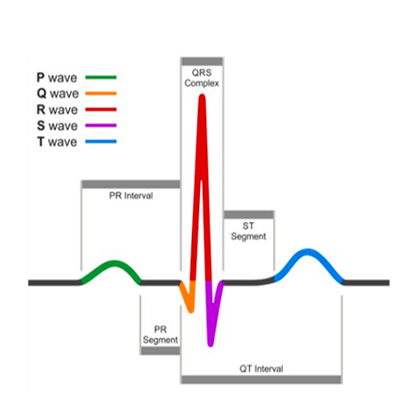Healthy Heart Anatomy & Physiology
The heart is a hollow muscle composed of four chambers with thick walls of tissue called the septum. The atria are the two upper chambers, while the ventricles are the two lower chambers of the heart. Both left and right halves of the work simultaneously to keep the blood supply stable throughout the body. The right atrium (RA) and the right ventricle (RV) release deoxygenated blood into the lungs for oxygenation. The oxygenated blood will flow through the left atrium (LA) and then course through the left ventricle (LV). It is the LV that acts as the main pump of the heart, transporting the freshly oxygenated blood to the rest of the body.

Figure 5
The aorta is a large vessel where the blood exits the heart. The backflow of blood is prevented by the valves located in between the connected chambers. The heart’s contractions go from top to bottom when the two atria contract at the same time and happens simultaneously with the ventricles. The beats of the heart begin in the RA, whereas because the LV is the biggest and thickest-walled of the four chambers, it is primarily responsible for supplying the rest of the body with newly oxygenated blood.
Blood leaves the heart through a large vessel S known as the aorta. Valves between each pair of connected chambers prevent the QT Interval backflow of blood. The two atria contract simultaneously, as do the ventricles, making the contractions of the heart go from top to bottom. Each beat begins in the RA. The LV is the largest and thickest-walled of the four chambers, as it is responsible for pumping the newly oxygenated blood to the rest of the body. The sinoatrial (SA) node in the RA creates the electrical activity that acts as the heart’s natural pacemaker. This electrical impulse then travels to the atrioventricular (AV) node, which lies between the atria and ventricles. After pausing there briefly, the electrical impulse moves on to the His–Purkinje system, which acts like wiring to conduct the electrical signal into the LV and RV. This electrical signal causes the heart muscle to contract and pump blood.
The contraction of the atria appears on the electrocardiogram (ECG) strip as the P wave. This then is transported to the AV node, which is responsible for releasing the electrical charge through the Bundle of His, bundle branches, and Purkinje fibers of the ventricles, causing ventricular contraction. The PR interval indicated on an ECG is the time between the start of atrial contraction and the start of ventricular contraction. This ventricular contraction is registered on the ECG strip as the QRS complex. After this, the ventricles will rest and will then register on the ECG as the T wave. The atria also repolarize, but because the magnitude is too small, it cannot be observed on the ECG strip.
The P wave, QRS complex, and T wave are indicators of a normal sinus rhythm (NSR), presuming that these are observed at proper intervals. In some cases, there will be delays in the transmission of the electrical charges, which will be detected by the ECG. These delays can be caused by abnormalities that are present in the conduction system. Interruptions in normal conduction can lead to problems such as heart blocks, pauses, bradycardias, and tachycardias, block, and dropped beats. These dysrhythmias will be explored in more detail later on in the handbook.
